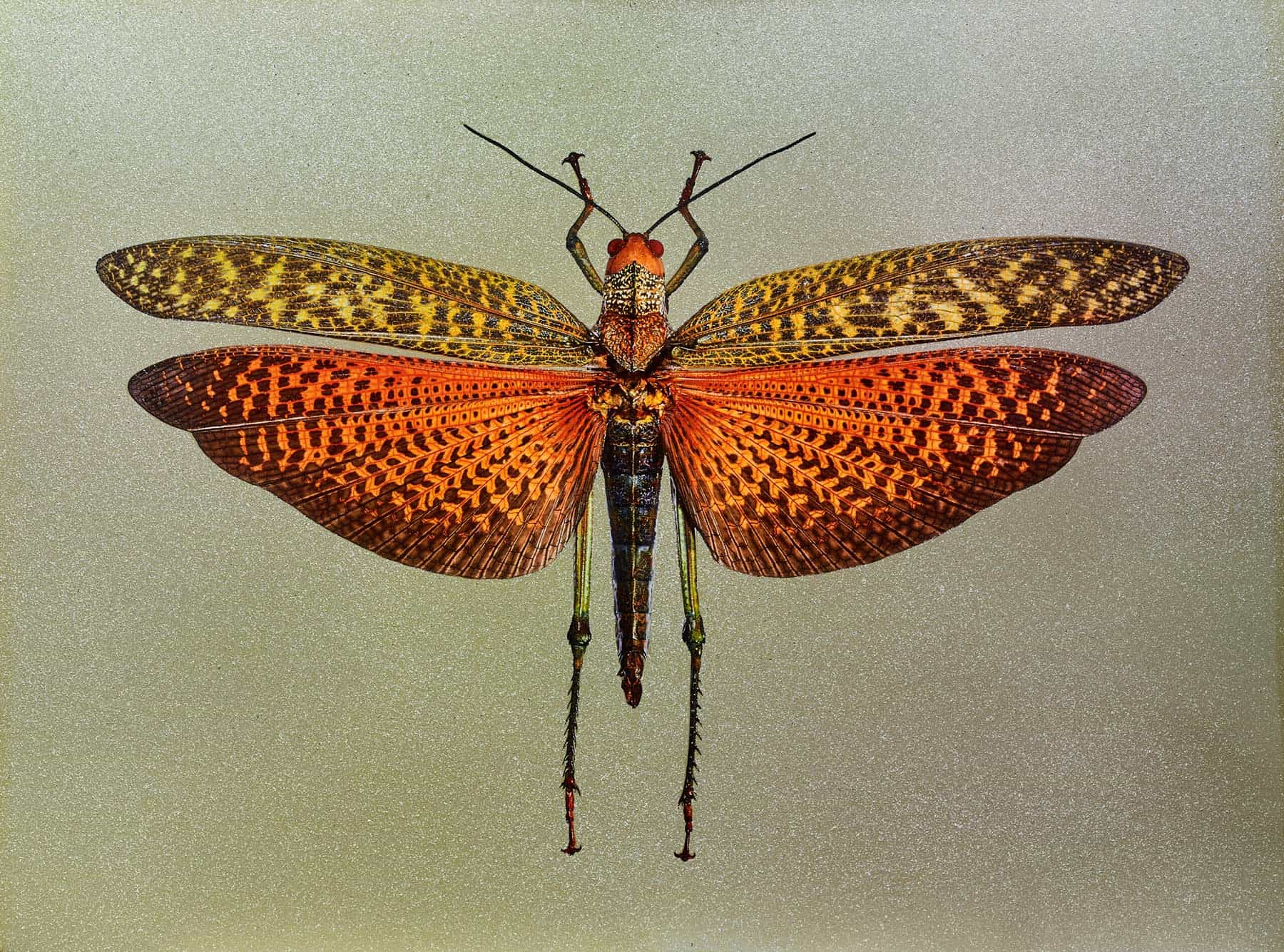
The Grasshopper species Tropidacris cristata dux of the genus Tropidacris is one of the largest known grasshoppers in the world. They belong to the Romaleidae family of grasshoppers. In addition to their size, they stand out as a result of their vibrant colour, along with their voracious appetite for all kinds of foliage.
The Yukpa Indians (Native people of tropical America), with their keen aesthetic sense of colour, must have been attracted to these beautiful insects from the start. Eventually they discovered they were edible and included them in their diets as a side dish. Fossils of this type have been found from the Pleistocene period.
The distribution area covers southeast Mexico to Nicaragua. The nominate form Tropidacris cristata is in a larger area from southeast Mexico to northern Argentina, including the west coast of Colombia, Ecuador and Venezuela, as well as some southern Caribbean islands.
Cristata dux is found in moist, forested areas, often on the edges of forests and in clearings, generally as scattered individuals, occasionally in denser populations that invade cultivated fields.
The development from mating to ovipositing takes about a year. The eggs are laid at a depth of 60 mm. The egg clutch contains 40-100 eggs. From Venezuela, egg layers of up to 250 eggs have been reported in the damp forest floor. Females lay once, rarely twice. The wingless young animals (nymphs) are sociable with black and yellow segments and occur mainly at the beginning of the rainy season. They live in sparse vegetation and disperse at the time of maturity, and then swarm into the treetops, which serve as forage plants. For example, sugar cane, corn, millet, cashew, rain tree are consumed by T. cristata dux in Venezuela.
As prey for predators, they have a strong influence on the food chain and contribute to the natural balance of the species population.
These animals are of considerable ecological importance.
As so-called defoliators feeding on treetops they allow the sunlight to partially reach the forest floor, thereby enabling the regrowth of the vegetation.